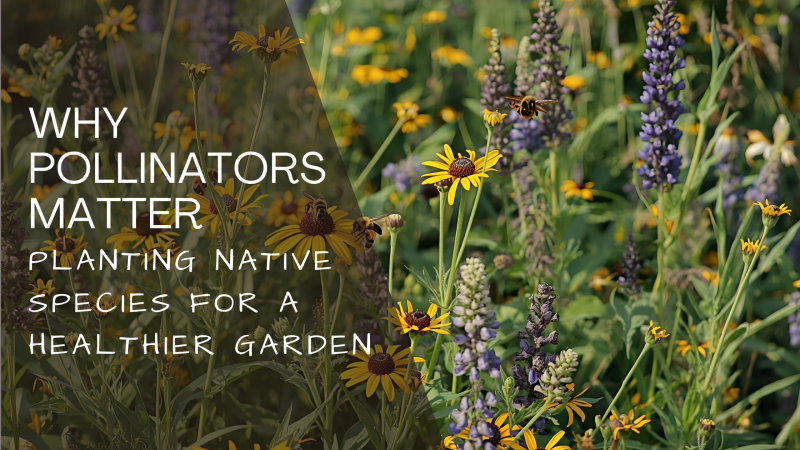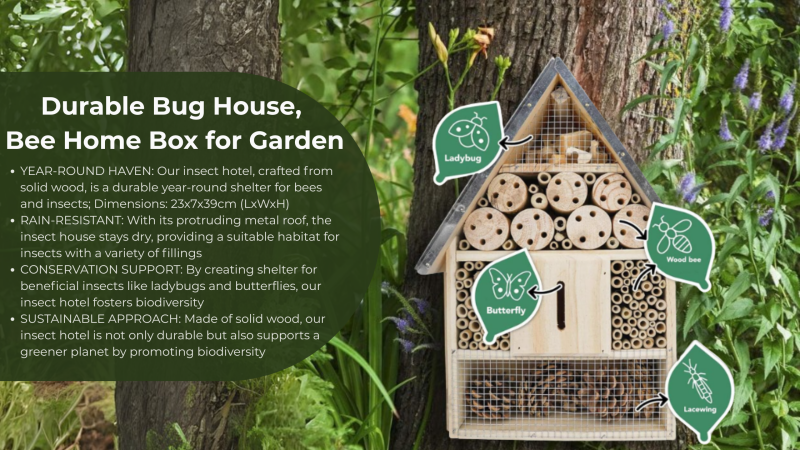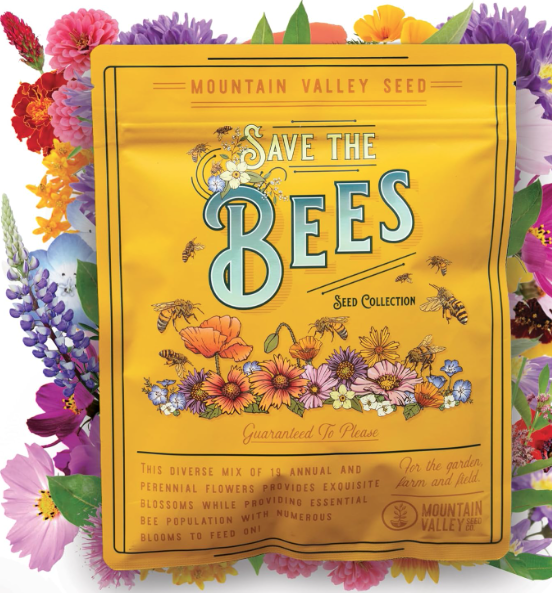
The Importance of Pollinators for Our Ecosystem
Pollinators are some of the most vital creatures in our ecosystem, yet they are often overlooked. From bees and butterflies to birds and bats, pollinators play a crucial role in maintaining the balance of our natural world. Without them, much of the food we eat and the plants we rely on for clean air and healthy soil would struggle to survive.

What Are Pollinators?
Pollinators are animals that carry pollen from the male parts of flowers to the female parts, enabling plants to produce fruits, seeds, and new growth. Common pollinators include:
-
Bees (honeybees, bumblebees, solitary bees)
-
Butterflies and moths
-
Birds like hummingbirds
-
Bats
-
Certain beetles and flies
Why Pollinators Matter
Food Production
About 75% of global food crops depend, at least partially, on pollinators. This includes fruits, vegetables, nuts, and seeds. Without pollinators, many of the foods we take for granted would become scarce or more expensive.
Biodiversity Support
Pollinators help plants reproduce, which maintains healthy ecosystems. A single flowering plant may depend on pollinators to produce seeds that feed animals, stabilize soil, and support other plant life.
Economic Importance
Pollination supports agriculture and the economy. Globally, pollinators contribute billions of dollars in food production each year, making them essential not just ecologically but economically.
Environmental Health
Pollinators sustain wild plants that provide habitats for other wildlife, contribute to forest regeneration, and help maintain air and water quality.
Global Importance of Pollinators
-
About 75% of the world’s food crops depend on pollinators for reproduction (FAO, 2019).
-
Pollinators contribute an estimated $235–$577 billion annually to global crop production (IPBES, 2016).
-
Roughly 35% of global agricultural land benefits from pollinator-dependent crops (FAO, 2018).
Declining Populations
-
Nearly 1 in 10 wild bee species in Europe is facing extinction (IUCN, 2015).
-
In the U.S., beekeepers lost around 48% of managed honey bee colonies between April 2022 and April 2023 (Bee Informed Partnership).
-
Monarch butterfly populations have declined by over 80% in the last 20 years (WWF, 2020).
Biodiversity & Ecosystem Impact
-
Over 180,000 plant species (including more than 1,200 food crops) rely on pollinators (USDA).
-
Pollinators are responsible for pollinating about 80% of all flowering plants worldwide (USDA Forest Service).
-
Loss of pollinators threatens not only food security but also habitats for countless animal species.
Everyday Impact on Food
-
Common pollinator-dependent foods include apples, almonds, blueberries, coffee, and chocolate.
-
Without pollinators, many of these foods would become rare and expensive—or disappear altogether.
-
Honey bees alone pollinate $15 billion worth of crops annually in the U.S. (USDA).
How You Can Help Pollinators
Plant Native Flowers
Native plants provide the nectar and pollen pollinators need. They are also better adapted to local conditions and support native wildlife.
Avoid Pesticides
Chemical pesticides can be toxic to pollinators. Choose natural or organic gardening solutions whenever possible.
Provide Habitat
Leave some areas of your garden wild, plant pollinator-friendly shrubs, or install bee hotels to offer shelter.
Support Pollinator-Friendly Farms
Buy local, organic produce, and support farms that use pollinator-friendly practices.

How to Create a Pollinator Garden: A Step-by-Step Guide
Pollinators like bees, butterflies, hummingbirds, and even bats are the unsung heroes of our ecosystem. They help plants reproduce, support biodiversity, and make possible much of the food we eat. But pollinator populations are declining worldwide due to habitat loss, pesticides, and climate change.
The good news? You can make a difference right in your own backyard. By creating a pollinator garden, you’ll not only support vital species but also enjoy a more vibrant, beautiful outdoor space.
Step 1: Choose the Right Location
Pollinators need sun and shelter. Pick a sunny spot that gets at least 6+ hours of light a day. Make sure it’s somewhat protected from strong winds and easy to access for watering and care.
Step 2: Focus on Native Plants
Native plants are the backbone of a pollinator-friendly garden because they’ve evolved alongside local species. They provide the nectar, pollen, and habitat pollinators depend on.
-
Plant a variety of native flowers that bloom in early spring, summer, and late fall.
-
Mix in shrubs, trees, and wildflowers to provide shelter and food diversity.
-
Skip the hybrids bred just for looks—they often lack nectar and pollen.
Step 3: Plant in Clusters
Pollinators like efficiency! Planting flowers in clumps or drifts (rather than scattering single plants) makes it easier for bees and butterflies to forage. Aim for 3–5 plants of each kind together.
Step 4: Provide Continuous Blooms
To keep pollinators fed all season long, include flowers that bloom at different times:
-
Spring: Crocus, wild lupine, coneflower
-
Summer: Bee balm, black-eyed Susan, milkweed
-
Fall: Goldenrod, asters, sunflowers
Step 5: Avoid Pesticides and Chemicals
Harsh pesticides and herbicides are toxic to pollinators. Instead:
-
Use natural pest control like neem oil or companion planting.
-
Encourage beneficial insects (ladybugs, lacewings) to keep pests in check.
Step 6: Add Water and Shelter
Pollinators need more than flowers. Provide:
-
A shallow water dish with pebbles for bees to land on.
-
Rocks, logs, or patches of bare soil for nesting.
-
Bee hotels or butterfly houses for extra shelter.
Step 7: Include Host Plants for Caterpillars
Butterflies need specific plants to lay their eggs on, called host plants. For example:
-
Monarch butterflies rely on milkweed.
-
Swallowtails love parsley, dill, and fennel.
Including host plants supports the full life cycle of pollinators, not just the adults.
Step 8: Let Nature Be Wild
Don’t over-manicure your garden. Leaving some wild edges, seed heads, or brush piles provides year-round shelter and food sources.
A pollinator garden is more than a beautiful backyard project—it’s a way to support biodiversity, protect endangered species, and create a healthier planet. Even small spaces, like balconies or patios with containers, can provide a safe haven for pollinators.




Add comment
Comments